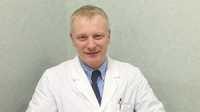21 Sep Bright Light Therapy Might Reduce Sexual Dysfunction in Men
MedicalResearch.com Interview with:
Professor Andrea Fagiolini, MD
University of Siena
Italy
MedicalResearch.com: What is the background for this study? What are the main findings?
Response: We have tested sexual and physiological responses to bright light and found that regular, early-morning, use of a light box – the same that we used to treat Seasonal Affective Disorder – led both to increased testosterone levels and greater reported levels of sexual satisfaction in man with difficulty with sexual desire or with sexual arousal.
We recruited 38 men who had been attending the Urology Department of the University of Siena and had a diagnosis of hypoactive sexual desire disorder or sexual arousal disorder – both conditions which are characterised by a lack of interest in sex. The 38 subjects were then divided the men into two groups. One group received regular treatment with a light box whereas the control (placebo) group was treated via a light box which had been adapted to give out significantly less light. Both groups were treated early in the morning, with treatment lasting half an hour per day. After two weeks of treatment or placebo, we found fairly significant differences between those who received the active light treatment and the controls.
Before treatment, both groups averaged a sexual satisfaction score of around 2 out of 10, but after treatment the group exposed to the bright light was scoring sexual satisfaction scores of around 6.3 – a more than 3-fold increase on the scale we used. In contrast, the control group only showed an average score of around 2.7 after treatment. Also, we found that testosterone levels increased in men who had been given active light treatment. The average testosterone levels in the control group showed no significant change over the course of the treatment – it was around 2.3 ng/ml at both the beginning and the end of the experiment. However, the group given active treatment showed an increase from around 2.1 ng/ml to 3.6 ng/ml after two weeks.
MedicalResearch.com: What should readers take away from your report?
Response: Our results are still preliminary and a larger confirmatory trial is needed before we can promote light therapy use for people with low sexual desire or with problems of erection. However, our findings are very promising, especially because light therapy usually has low side effects. Of course there will be a few patients – for example those with an eye condition or anyone taking medicines which affect light sensitivity- who would need to take special care or for whom the treatment could be contraindicated . However if this treatment can be shown to work in a larger study, then light therapy may offer a way forward.
MedicalResearch.com: What recommendations do you have for future research as a result of this study?
Response: We need to replicate the study in a larger group pf patients and see the long term effects of the treatment
MedicalResearch.com: Is there anything else you would like to add?
Response: Light therapy is being used successfully to treat seasonal affective disorder, a type of depression that stars in the fall and lifts in spring/summer. We know that both interest in sex and testosterone levels are usually higher in the spring and summer. Our findings are in line with a study published in Neuroscience Letters 2003 where the levels of LH ( a pituitary hormone called luteinizing hormone that raises testosterone levels in men) were measured following one hour of bright light therapy and where researchers found that LH levels increased by 69.5% after bright light therapy but those levels were unchanged after placebo light exposure.
These findings suggest bright light therapy may not only ease sexual dysfunction in men but it may also trigger ovulation in women, which is also controlled by LH, which may be interesting for infertility studies.
MedicalResearch.com: Thank you for your contribution to the MedicalResearch.com community.
Citation:
European College of Neuropsychopharmacology 2016
(ECNP) abstract discussing:
Lack of interest in sex successfully treated by exposure to bright light
Note: Content is Not intended as medical advice. Please consult your health care provider regarding your specific medical condition and questions.
More Medical Research Interviews on MedicalResearch.com
[wysija_form id=”5″]
Last Updated on September 21, 2016 by Marie Benz MD FAAD

